A Guide to Understanding Pet Rat Body Language & Behaviour
Even though rats are small animals, they can have so much to say. Rats communicate to other rats and to us humans with scents, sounds and body language. Generally you can tell when they are leaving their scent markings but some of their vocalisations are too high pitched for us to hear. However, body language is easy for us to interpret. Learning the body language of a rat can help with understanding how your pet rat may be feeling.
Signs of an Annoyed Rat
Swishing of the tail can mean a few things. If your rat is play fighting it can be a sign of excitement but in a real fight, it will deepen to anger or fear. If you notice this happening when your pet rat is approaching another pet in your home, you should interrupt the encounter straight away.
Another sign of annoyance or displeasure is if your pet rat pushes your hand or food away with their forepaws. In some cases they may even turn around and walk away. They will do this to other rats as well as us humans. If your pet rat does this, they want whatever it is that’s annoying them to go away.
A long, whiny squeak is another sign of annoyance and displeasure. Generally you will hear this from a rat that’s trying to steal some food from another rat or if one of your pet rats is being force groomed.
A quick, sharp squeak is a sound from rat that is very annoyed. If your pet rat does this while you’re handling them, it is often a sign that your pet rat doesn’t like what you’re doing.
If you’re handling your rat and pushing them past their limits by ignoring their squeaks of discomfort, they may start lunging at your hand with their teeth. Normally they’re only biting at the air but you should immediately stop doing whatever you’re doing and let them go.
Signs of a Happy Rat
Bruxing: Bruxing is when your rat is grinding or chattering their teeth together. This is a sign that your rat is content and happy. Bruxing is like a rats version of purring. Since rats teeth never stop growing, rats will also grind their teeth together to help wear them down.
In some cases, rats will also brux if they’re uncomfortable or distressed. Generally the bruxing of an uncomfortable or stressed rat will be much louder and be followed by self-grooming. This is a rats way of trying to comfort themselves.
Eye boggling: Eye boggling is when your rat is bruxing so hard that their eyes start bulging in and out. This is a sign of a happy rattie.
Wagging tail: When play fighting with other rats, they will sometimes wag their tail. Wagging of the tail is a sign of excitement. However, in some cases, wagging of the tail can be a sign of anger.
Hopping: When rats are excited and playing, they will hop around. They will hop in the air, bounce and run around back and forth.
Peeping/squeaking: When rats are being groomed they will sometimes make a soft peeping or squeaking sound. This is just to let the other rat know that they’re grooming a little bit too hard.
Play fighting: Rats are very social animals that love to play. One of their favourite things to do is to play fight.
Signs of Fear or Pain
Medium length, loud squeak: A medium length loud squeak is a sign that your pet rat has been frightened or is in pain. If you hear this noise, it’s important that you go and check on them to make sure nothing is wrong. Your rat may have been startled or could be injured.
Long length, loud shriek: This almost sounds like a scream and is a definite sign of pain. If you hear this sound it could be a sign that your pet rat has gotten itself caught up in something or is getting attacked by another rat. You should check on your pet rats immediately if you hear this sound.
Pinched in sides: This is when the sides of your rat where their belly is will appear to be caved in and the hip bone will be showing prominently. This is a sign that your pet rat is in pain. If you notice your pet rat having pinched in sides, it may be best to take them to the vet to get checked.
Puffed up fur: When rats have puffed up fur, this is generally a sign that your pet rat is feeling unwell.
Freezing: When rats are frightened by something that they can smell or see, they will freeze like a statue.
Signs of an Angry Rat
Teeth chattering: Rats will make a chattering sound with their teeth when they are angry. This is more intense and more louder than bruxing.
Hissing: When rats are angry and ready to attack they will make a hissing sound.
Slapping of the tail: When rats are angry or annoyed they will slap their tail.
Bearing teeth: When rats are very angry, they will pull their mouth back to show their bottom teeth. This may be followed by a lunge and bite.
Hair standing up: When rats are angry and ready to attack, they will make their hair stand up.
Arched back: To make themselves appear to be bigger than their opponent, rats will arch their back. If a rat has an arched back with hair standing up, it’s a sign of anger.
Fighting: When two rats are fighting you will be able to tell the difference from play flighting. When two rats are fighting they will be shrieking, rolling around, biting each other and wrapped in a ball. When rats are fighting it is very dangerous and could even cause death.
Pet Rat Territory Marking
When rats are marking their territory, they may rub their body against objects. Sometimes your pet rat may rub their body up against an object to claim it as theirs.
Another thing that rats do when marking their territory is to rub their palms on objects. If you notice your pet rat rubbing their palms on something, it’s their way of marking and claiming an object as theirs.
The most tradition way that rats mark their territory is by urine markings. You may notice your pet rat leaving drops of urine when they’re walking. They will do this on their owners as well. Rats feel more comfortable in an environment where they’re able to smell their own scent.
Signs your Female Pet Rat is in heat
The vagina of a female rat will become swollen and turn to a reddish purple colour when she is in heat. During this time, she is ready to mate with a male rat. Female rats will go into heat approximately every 4 days.
When in heat, female rats will do a ‘mating dance’ to try and attract male rats. The female rat will run back and forth from the male while wiggling their ears and exhibiting postures.
When female rats are in heat, they will wiggle their ears. When female rats are wiggling their ears, this is a sign that they are ready to mate. You will notice that female rats do this while doing the mating dance.
The mating posture is another sign of the female rat being in heat. She will also display this while doing the mating dance. You will notice that her head is arched up as well as her hind end, the middle of her body will be touching the ground and her tail will also be slightly moved to the side. You may accidentally trigger female rats to go into this position if you’re handing them while they are on heat.
Sleeping Positions of Pet Rats
Rat pile: A rat pile is a common sleeping position where rats pile up on each other and sleep together to bond as well as share warmth.
Rat ball: This is where rats sleep in a ball with their head between their legs. If your pet rat is sleeping in a ball, it generally means that they are comfortable.
Pancake: This is where rats lay flat on their belly. Rats generally do this on a cool surface to help cool them down when it’s warm.
On their back: When rats lay on their backs, they are unprotected and exposed. If your pet rat is laying on their back sleeping, this is a sign that they trust you.
Dead sleep: This is where your pet rat is sleeping on their side with their hands and feet relaxed. When you first see this you may get a fright because they look dead but don’t worry, if your rat sleeps like this, it’s a sign that they are comfortable.
Head hanging: Sometimes rats may lay down with their head hanging over a surface. If you notice that your pet rat is looking lethargic as well as having irregular breathing and you notice that they are also laying like this it could be a sign of a respiratory issue. It’s important that you take your pet rat to see a vet immediately to get checked.
Playful and Dominant Behaviour
Crawling under: This is where a rat will crawl under the other rat and freeze.
Walking over: This is where one rat will walk over the other one. Sometimes they will also leave their scent on the other rat.
Standing over: This is where one rat will stand over the other one. This is similar to them sizing up another rat.
Rolling over: This is where a rat will roll onto their back exposing their belly. They do this to try and protect their neck and flank which is where rats typically try and bite.
Sizing up: This is where two rats are facing each other while standing still to try and size each other up. Someones they may have their front feet off the ground as well. This generally leads into them boxing and wrestling.
Sidling: Sidling is where a rat will arch their back up and walk sideways towards another rat. In some cases, the rat will press against the other.
Kicking: This is where the rats will use they back legs to kick at the other. Often they do this to try and flip the other rat over to pin them down.
Boxing: When two rats are boxing, this is their way of trying to stop the other from reaching their neck. When rats are boxing they will be standing on their hind legs pushing at each other with their paws.
Wrestling: When rats are wrestling with each other it can be to try and establish dominance or just to have fun. You might notice your pet rats doing this with each other often for fun.
Squeaks: When your pet rats are playing with each other you may hear various squeaking sounds.
Pining: Pining is when one rat pins the other to the ground. They do this to establish dominance, even while playing.
Force grooming: When a rat pins the other to the ground, you will notice them force grooming the other. Force grooming is where one rat nibbles at the others fur.
Mock humping: When you see two rats of the same sex trying to hump each other it can be a sign of dominance.
Other Pet Rat Behaviours
‘Windmilling’ tail: A ‘windmilling’ tail is when the tail of a rat spins around similar to a windmill. If your pet rat spins its tail around when being picked up or put down, it can be a sign of insecurity. To help with this, simply hold your rat in a way that they will feel more comfortable.
Swaying: You may notice that rats with red or pink eyes will sway side to side. This is completely normal as this is just their way of trying to see better. Rats don’t have binocular vision, meaning they see two different images from each eye and swaying helps them to create a better 3D image of their surroundings.
Grooming: Grooming is a rats way of keeping themselves clean. Sometimes if a rat is uncomfortable they will begin to groom themselves to help make them feel better. Usually they will groom around their ears and face while looking up occasionally to check their surroundings.
Rats will also groom other rats as a sign of companionship. If your pet rat starts licking and nibbling you, that is their way of grooming you and means that they accept you as part of their family.
Tugging: A rat may tug at you or at another rat as a sign that they want to play. Sometimes a tug can be taken as aggression but if a rat wanted to hurt you they would draw blood.
Popcorning: Popcorning is when a rat jumps around sporadically. This normally happens during play time when they are excited and playful. Popcorning can also be used as a sign to another rat that they want to wrestle.
Yawning: Generally yawning is a sign that your pet rat is tired. However, yawning can also be used to signal that they aren’t interested or that they aren’t going to hurt you.
Monkey barring: This is where your pet rat may be crawling around the cage on the bars. This can be a sign that they are bored.
Curiosity: Rats are curious little animals and when they smell something that interests them they will sniff the air. Sometimes they may move their ears forward, stand up on their hind legs and stare. Nervous rats may tilt their head side to side slightly while doing this. They do this because they don’t have the best eyesight or depth perception and moving their head allows them to recognise the object they’re trying to look at better. This is like the rat version of a human squint. Different smells can indicate different things such as food or danger.
Barbering: Barbering is where a rat will excessively groom in the same area causing it to leave a bald patch. If you notice that your pet rat has barbered themselves or a cage mate, it can be a sign that they’re bored or that they may have mites.
Stashing: This is where rats take some food and stash it for later. It’s very common for rats to do this and they will normally stash the food in the same spot each time.
Nest building: Both female and male rats will build nests. They will use any material they can find to make a nice and cosy bed.
Stealing: Rats love stealing things (especially food) and will steal anything whenever they get the chance too.
Understanding your pet rats body language and behaviour can help with better understanding how your little friend may be feeling.

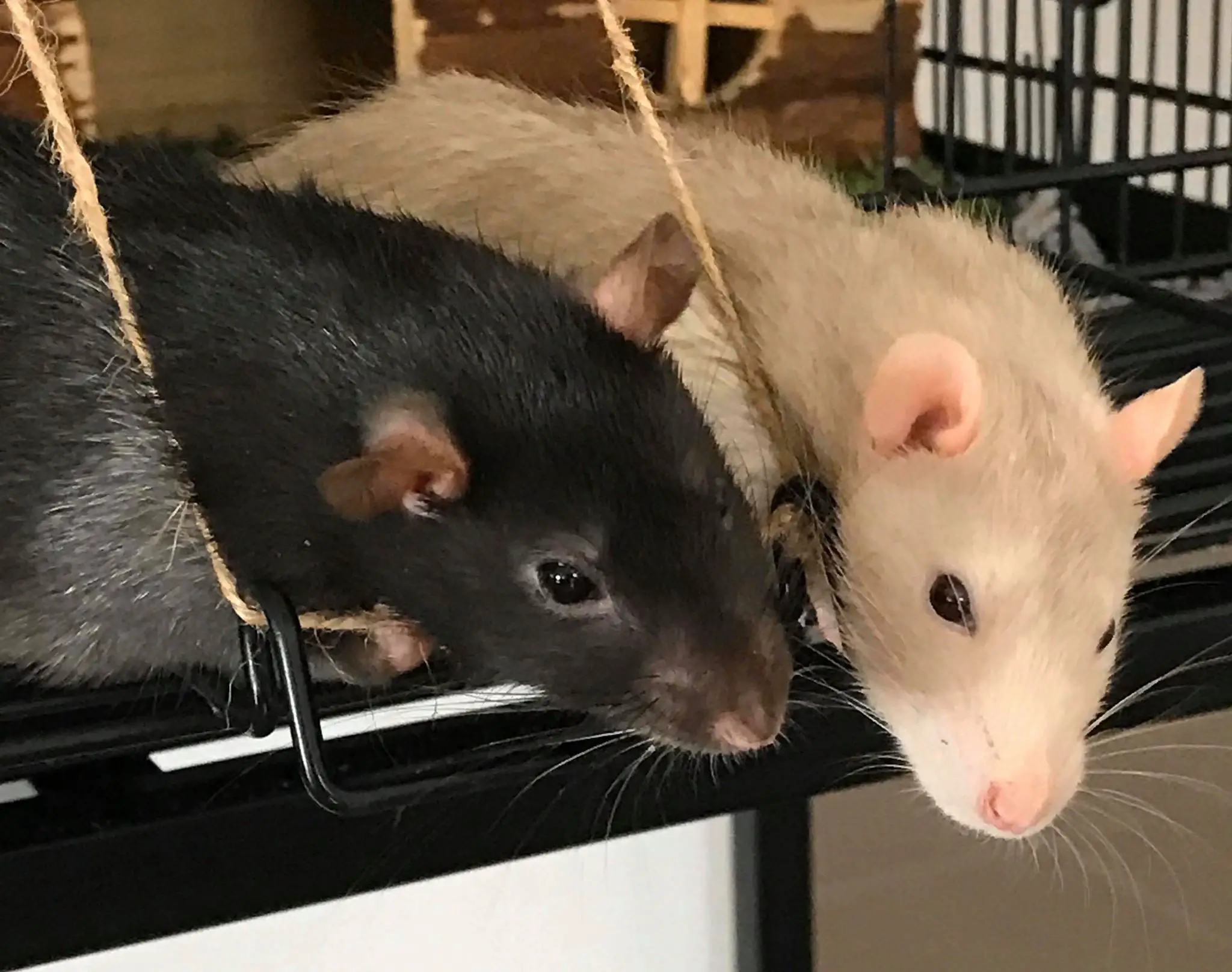

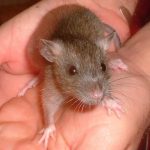
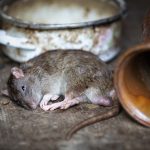
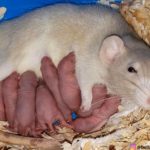

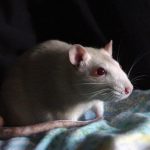
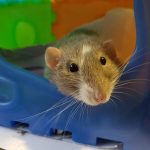

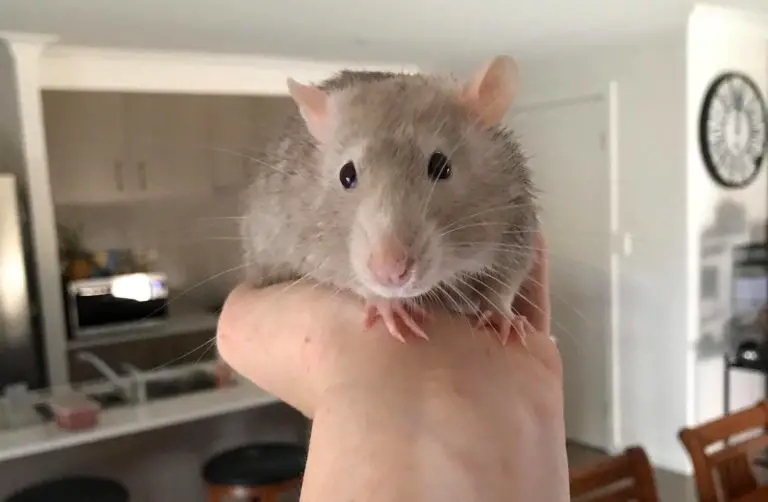
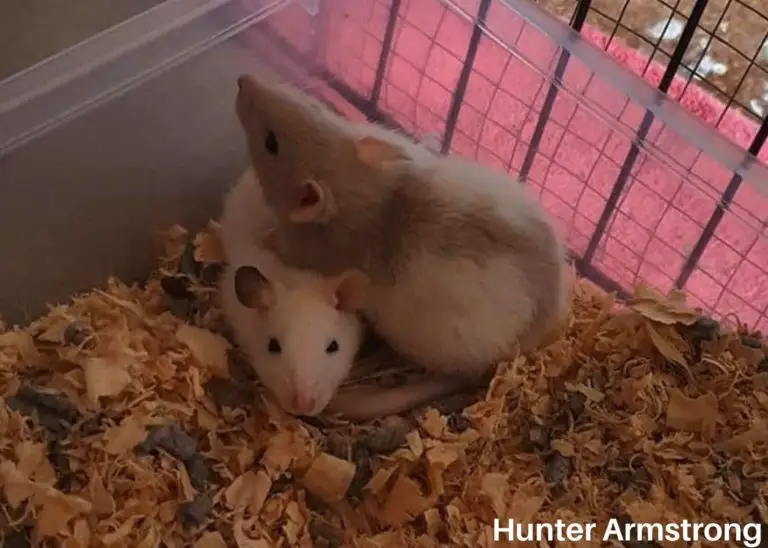
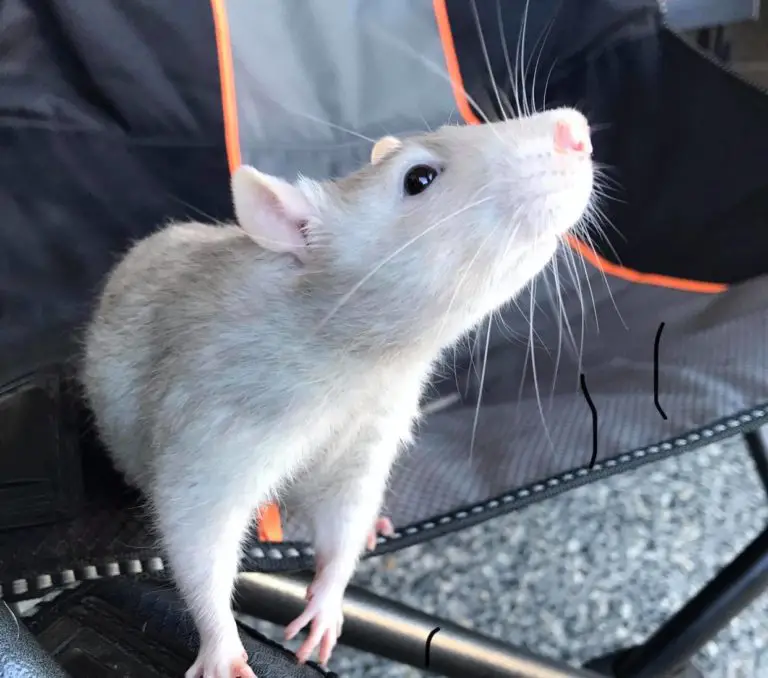
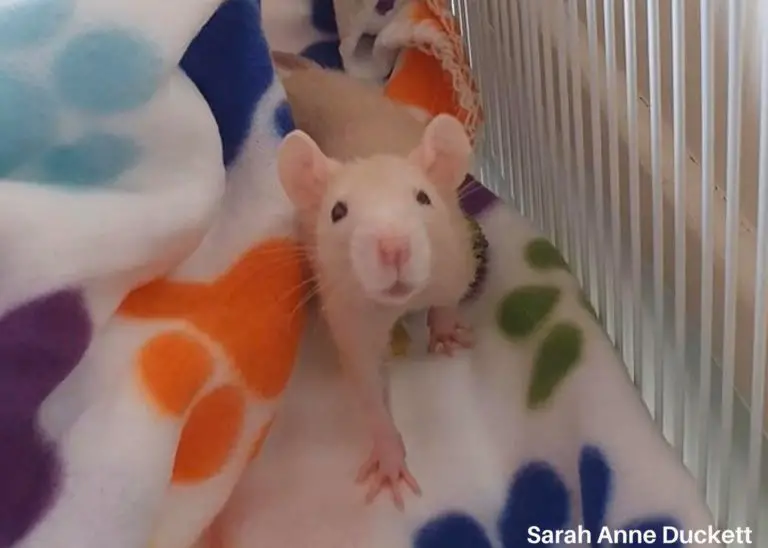
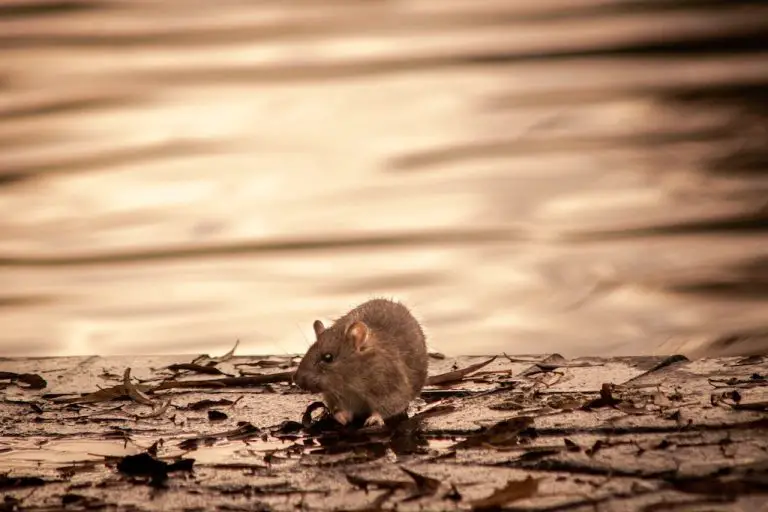
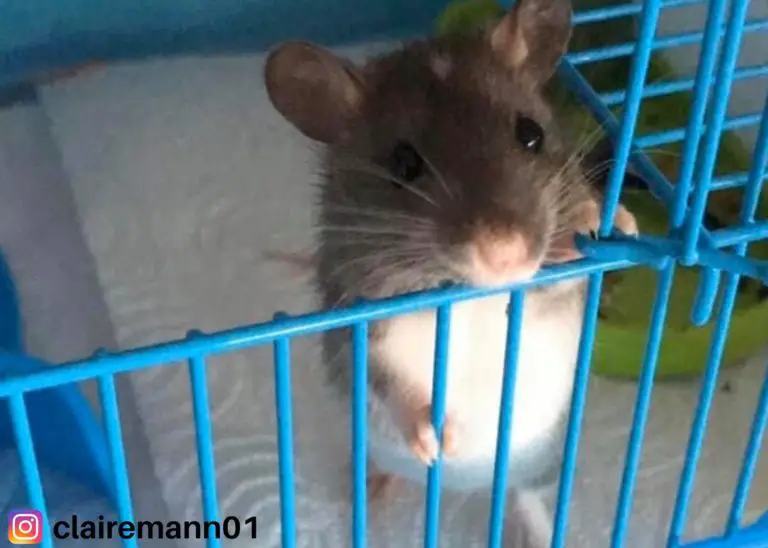
One Comment
Comments are closed.